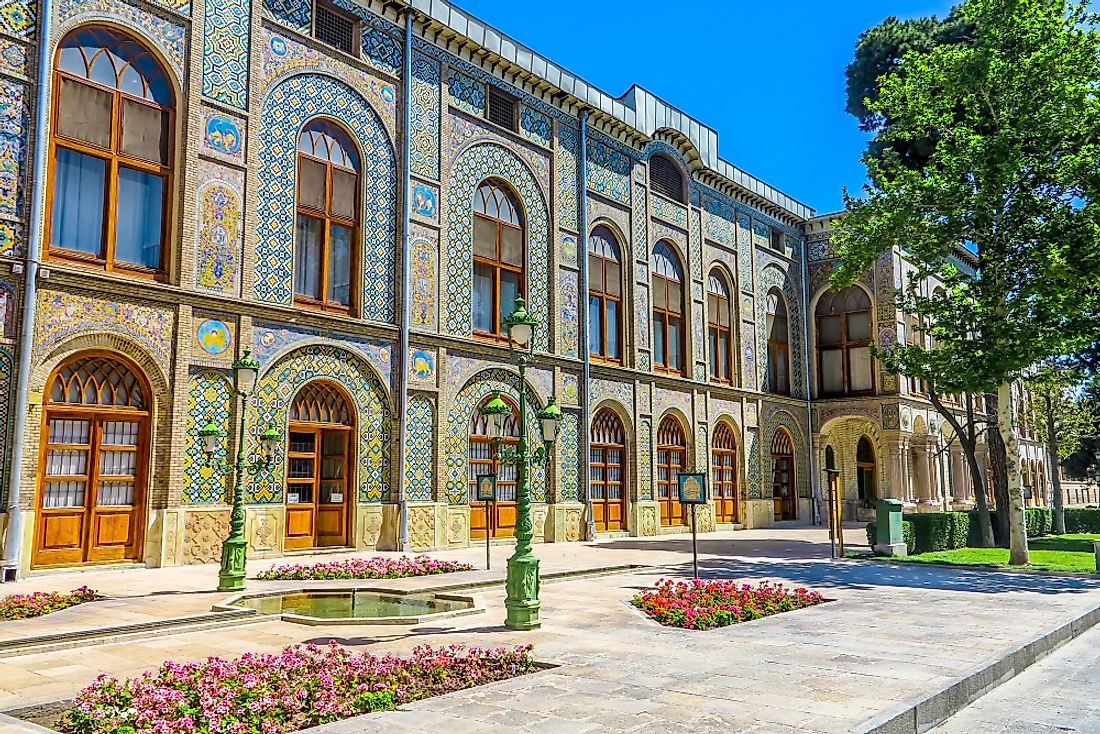UNESCO World Heritage Sites In Iran

Iran, officially the Islamic Republic of Iran, is a sovereign state in Western Asia bordering eight countries, Iraq, Turkey, Armenia, Nagorno-Karabakh Republic, Azerbaijan, Turkmenistan, Afghanistan, and Pakistan. It is the second-largest country in the Middle East with an area of 636,372 square miles and a population of 78.4 million. Most of the Iranian territories were lost during the 18th and 19th century’s conflicts with Russia. Iran has been proven to be the fourth largest oil reserves in the world. It is a diverse ecoregion with a climate ranging from arid to subtropical.
UNESCO World Heritage Sites In Iran
Armenian Monastic Ensembles of Iran
The Armenian Monastic Ensembles of Iran is an ensemble of Armenian churches established during the period. These are the St. Thaddeus Monastery, The Saint Stepanos Monastery and The Chapel of Dzordzor. They are located in the West Azerbaijan and East Azerbaijan provinces, Iran covering an area of 0.498 square miles and were established between the 7th and 14th century. It was built with a variety blends of architecture from the Assyrian, Armenian cultures, Byzantine, Eastern Orthodox, Persian, and Muslims. It was listed as a cultural site by the UNESCO as a world heritage site in 2008.
Golestan Palace
The Golestan Palace, also the Roseland Palace, is the former royal dynasty of Turkic origin in Tehran, Iran’s capital city. The palace was built from 1524 to 1576 and since then has undergone several renovations. The palace consists of seventeen structures which are palaces, museums, archives and halls. The palace was built during the ruling of the Qajar kings and was mainly used for official duties like coronations. It was listed as a World Heritage site by UNESCO in 2013.
Lut Desert
The Lut Desert, also known as Dashat-e Loot, is a large salt desert in Kerman and Sistan Province, Iran. It is the twenty-fifth largest, driest, and hottest desert in the world with temperatures up to 70 degrees Celsius. Gandom Beryan plateau covering an area of 190 square miles is the hottest part of the desert with dark lava on the sand. It was inscribed on the UNESCO world heritage list in July 2016.
Persepolis
Persepolis, also known as Takht-e-Jamshid, is located approximately 38 miles northeast of Shiraz in Fars Province, Iran. It was the capital of the Achaemenid Empire and architecture used is unique only to the Achaemenid style of the 550 to 330 BC. Its ruins were inscribed in the UNESCO world heritage site in 1979.
Susa
Susa was one of the important cities in the Ancient Near East empires located in the Lower Zagros Mountains, Khuzestan province, 160 miles east of Tigris River. It appears in the earliest Sumerian records, and the first inhabitants were traced in 7,000 BC. The monumental fist platform was built over 6000 years ago and has remained the center of attraction in the town. . It has a significant number of Christians are found within the city. It was listed as a cultural site by UNESCO in 2015.
Threats And Conservation Efforts
The heritage sites of Iran are under the threat due to modernization of the country and erosion due to time. Most of the ancient cities arefalling apart due to neglect and adverse weather consitions. The ancient city of Susa has been destroyed thrice in its history by Ashurbanipal, Muslim armies, and invasion by Mongols.
UNESCO World Heritage Sites In Iran
| UNESCO World Heritage Sites in Iran | Year of Inscription; Type |
| Armenian Monastic Ensembles of Iran | 2008; Cultural |
| Bam Cultural Landscapes | 2004; Cultural |
| Bisotun | 2006; Cultural |
| Golestan Palace | 2013; Cultural |
| Gonbad-e Qābus | 2012; Cultural |
| Lut Desert | 2016; Natural |
| Masjed-e Jāmé of Isfahan | 2012; Cultural |
| Maymand Cultural Landscapes | 2015; Cultural |
| Meidan Emam, Esfahan | 1979; Cultural |
| Pasargadae | 2004; Cultural |
| Persepolis | 1979; Cultural |
| Persian Gardens of Iran | 2011; Cultural |
| Persian Qanats of Iran | 2016; Cultural |
| Shahr-i Sokhta | 2014; Cultural |
| Sheikh Safi al-din Khānegāh and Shrine Ensemble in Ardabil | 2010; Cultural |
| Shushtar Historic Hydraulic System | 2009; Cultural |
| Soltaniyeh | 2005; Cultural |
| Susa | 2015; Cultural |
| Tabriz Historic Bazaar Complex | 2010; Cultural |
| Takht-e Soleyman | 2003; Cultural |
| Tchogha Zanbil | 1979; Cultural |











